 Restoring a film to the vision intended by its director was once reserved for the hallowed likes of George Cukor (A Star Is Born) and Orson Welles (Touch of Evil) long after they had shuffled off this mortal coil. Thanks to home video, film director’s cuts of their passion projects aren’t such a rarity today.
Restoring a film to the vision intended by its director was once reserved for the hallowed likes of George Cukor (A Star Is Born) and Orson Welles (Touch of Evil) long after they had shuffled off this mortal coil. Thanks to home video, film director’s cuts of their passion projects aren’t such a rarity today.
Still, it’s all but unheard of for a director’s cut to tell an almost completely different story. Fans of queer cinema were a bit disappointed when 54, Mark Christopher’s widely-heralded ode to the era of polyester shirts and disco balls, hit theaters in 1998. The tale of an ambitious Jersey boy Shane (Ryan Phillippe) climbing the social ladder at NYC hot spot Studio 54 under the lustful eye of lascivious club owner Steve Rubell ( Mike Myers) lost about 40 minutes of footage and some cohesion before its theatrical release by Miramax (then run by Bob and Harvey Weinstein and owned by Disney).
Now 17 years later, an officially restored cut of Christopher’s decidedly-queerer version of the movie has been screening at film festivals around the globe. In February, it was a hit at the Berlin Film Festival, and a showing at San Francisco’s famed Castro Theatre in May was a lively audience event that the director compares to a screening of The Rocky Horror Picture Show. It’s now available on iTunes and will be shown June 11 at the Tel Aviv LGBT Film Festival, June 26 at the Castro Theatre during San Francisco’s Frameline film festival and July 16 at an outdoor screening at the Hollywood Forever Cemetery during L.A.’s Outfest.
Christopher chatted with Queerty about the inspiration for his film, the infamously-censored kiss between Phillippe and Meyer and how the new version is completely different from the movie released in 1998.
How about we take this to the next level?
Our newsletter is like a refreshing cocktail (or mocktail) of LGBTQ+ entertainment and pop culture, served up with a side of eye-candy.
 Queerty: Where did the inspiration come from for you to make 54?
Queerty: Where did the inspiration come from for you to make 54?
Mark Christopher: I was a teenager during the disco era. I loved the music. I would sneak into discos in the cornfields of Iowa and dance with my friends. Every week a new amazing disco song would come out and we’d dream about going to Studio 54 because it was in all the magazines. Cut to many years later when I was in grad school at Columbia: I wanted to make my own disco version of American Graffiti. One of my mentors there was [award-winning writer-director] Paul Schrader, who said, “Put it at 54.” Which was a place where Paul used to go. He introduced me to people and I realized I wanted to make it about people who worked there, the waiters and bus boys and worker bees. That would be the way into the very exclusive place. I loved being a waiter in college and how you create a family with coworkers.
 Researching this project must have been a very interesting and a lot of fun. What resources did you draw upon?
Researching this project must have been a very interesting and a lot of fun. What resources did you draw upon?
It was so well documented in photography. I talked to all the people I could, both famous and especially the non-famous, like busboys and bartenders and coat check girls. One sort of led to the other and I just collected stories for years. At that time I was researching in the mid-’90s there was very little video tape of it. Now you can probably find a million things. I found a few short pieces that came from local television, but there was one five-minute movie that an NYU student who was then in Florida had shot inside the club. It was inspirational for finding the dark, flashy look of the movie.
Nearly everyone of a certain age has a story about Studio 54. How did you decide which ones to use to inform your film?
Everyone had a story. Anything could happen in that place. It was like a circus. Once you get in the headspace of that world you’re creating then your mind can run free. There were so many stories to tell about Studio 54, but I chose to tell the one about the kids who worked there.
Your film was released in 1998, around the same time as Boogie Nights and The Last Days of Disco, which also chronicled the late 1970s as a hedonistic, halcyon period. It was as if looking back at the disco-era was part of the cinematic zeitgeist. Were you aware of the other films while making yours?
I actually made a short movie in 1992 called The Dead Boys Club, that had a disco element in it. In 1992, disco still sucked. There was a huge reaction against disco. When I was making that movie I remember the upperclassmen were making fun of the poor first year student making a movie with disco in it. Later in the New York clubs, disco started coming back and that dovetailed into this idea I was working on about Studio 54. I think there’s a natural thing about films and nostalgia and looking back after about 20 years. And that’s what happened then with people looking back at the late ‘70s, which was such a different time from the late ’90s. In my case it was looking back at a freer time with more liberties. It was pre-AIDS, cocaine wasn’t considered addictive and there was no judgment on sex and drugs. I wanted to show that in the film.
 Before the film was released there had been so much buzz about the relationship between Ryan Phillippe’s and Breckin Meyer’s characters and about Mike Myers as Steve Rubell that a lot of people expected a gay-themed film. Do you think this affected the way the film was received in 1998?
Before the film was released there had been so much buzz about the relationship between Ryan Phillippe’s and Breckin Meyer’s characters and about Mike Myers as Steve Rubell that a lot of people expected a gay-themed film. Do you think this affected the way the film was received in 1998?
Probably. I think the film was ahead of its time in many ways for a big movie. They put it out on 1800 screens. You have this complex, deeply-flawed lead character. In fact, all the characters are very flawed. It’s not full of likable 1998 people. I think that was part of it. Since then, in the one-hour dramas on television, that’s what we expect and want flawed dark lead characters. I think that’s paved the way for the movie to come out again.
How did you decide on Ryan to play Shane? Were you familiar with his work as a gay teen on One Life to Live?
No, but I was familiar with his brief role in White Squall. Ryan really stood out to me in that, but when I saw him for the role he was too young. He went away and made I Know What You Did Last Summer and came back about a year later and he was young man so we cast him.
The much-ballyhooed kiss between Ryan and Breckin that was excised in 1998 is now back in the film.
That’s a real kiss. As Breckin likes to say that’s the first time he got razor burn. They wear it proudly.
 Mike Meyers was a very mainstream comedy star in 1998. Did he or his reps express any hesitation at his playing such a lecherous gay man as Steve Rubell in a drama?
Mike Meyers was a very mainstream comedy star in 1998. Did he or his reps express any hesitation at his playing such a lecherous gay man as Steve Rubell in a drama?
It was actually his manager who came to us. The studio and I couldn’t agree on anyone for this role for a year. It was Mike’s manager who came to us and he had absolutely no hesitations. He wanted to know everything about the world. I had three weeks of rehearsal with him and there were long discussions about it. He was a thousand percent invested in it. It made sense to me when his name came up. Comedians, if they’re good actors, are so good at playing tragedy that I immediately thought he could be great. I looked at his work, even though he’d only done comedy, and I could tell he could do it. The thing is it was a really plumb role. Miramax knew that and I knew that and the acting community knew that.
Was Rubell really such a lech? Did he really bribe guys who worked at the club into having sex with him?
I don’t know that he had to pay for it. I think that he was so powerful he could do whatever he wanted. I’ve heard a lot of stories. The rolling around in the money is true. He would do that. Whether the other stories are true or made up, they’re stories that I heard.
I’d forgotten Mark Ruffalo was in the film. He’s become a very vocal LGBT ally over the years. What do you remember about working with him on this film?
He was wonderful. In fact, I found him in a play off-Broadway. If he’d made films before, I hadn’t seen them. I was very interested in him for Breckin’s role. I decided I wanted Mark in the movie because he has that thing so I cast him as Shane’s other best friend in New Jersey and built the role up a bit for him. It ended up getting cut down again, but he’s that kind of person. He’s not only a wonderful actor, but you can tell he’s the kind of person you want to spend time with. I had no doubt that he would do well in this business. He’s a wrestler, by the way. That’s one reason I was so interested in him for 54. The character of Greg [eventually played by Meyer] is a wrestler. It was funny that he finally got to play one in Foxcatcher last year.
 One character who emerged as something of a fan favorite is Disco Dottie, the elderly Studio 54 habitué who eventually dies on the dance floor. Was there a real-life inspiration for this character?
One character who emerged as something of a fan favorite is Disco Dottie, the elderly Studio 54 habitué who eventually dies on the dance floor. Was there a real-life inspiration for this character?
Yeah, her name was Disco Sally. She was 80-ish and she wasn’t the most attractive lady in the world, but she was a lawyer. She’d be at the disco every night. She was an inspiration. Dottie became this tiny thing in a giant puff wig. If you look at photos of Disco Sally, they bear no resemblance, except in age.
Before the film was released, there’d been so much discussion about the gay or bisexual content in the film that was significantly toned down before it played in theaters. Do you think this affected the way it was received in 1998?
People have talked about this and built it up so much because it was the first time in a big movie where the two male leads kissed. If you shot it now, you might create more of a make-out session, but that kiss is right for this story.
 How did the studio-mandated edits and reshoots change your original vision?
How did the studio-mandated edits and reshoots change your original vision?
The two versions are entirely different in character development, in character relationships, tone, theme and story. With so many director’s cuts, there are additional scenes. I’ve never seen once where it’s actually a different story. That’s what’s so exciting about getting this out there.
Even the look of your version of the film feels very different to me. It seems much darker.
The whole look is different. We shot it like that old film I told you about that we found. I wanted it to shoot it like we experienced clubs. It’s dark and you see imagery and glitter with flashes of light. We worked very hard to get that look. When the studio cut came out they pumped a bunch of light into it. When we restored the movie, we restored the original look, as well. My goal is that you feel like you walk into a nightclub when you walk into that movie. That’s why it’s best to watch it with an audience. Although it’s on iTunes, it will continue to show at film festivals because that experience you have watching it in the theater creates a similar experience to being in a nightclub.
Your cut of the film has screened at film festivals from Berlin to San Francisco with more to come. How have audiences reacted to it?
Wonderfully. Berlin was like a dream. The reaction at the Castro was so crazy that it was like watching The Rocky Horror Picture Show for the first hour until the movie turns dark. It was also just in Seattle. This is a film that plays very well in the theater.
[Outfest will screen 54 on July 16 at Hollywood Forever cemetery.]
Watch the trailer for 54: The Director’s Cut below.



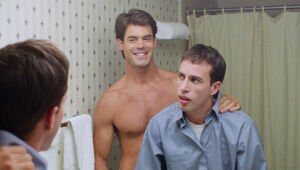

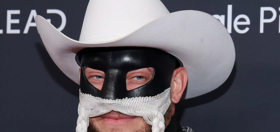

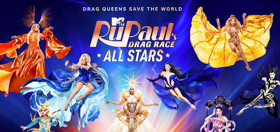


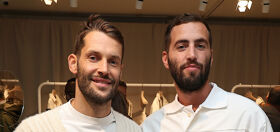

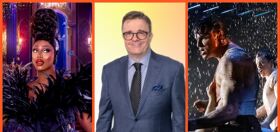
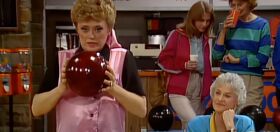

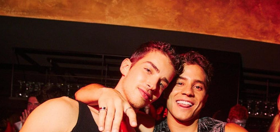
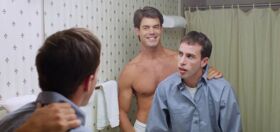


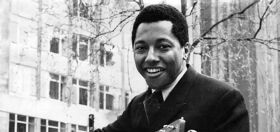



Desert Boy
Ryan Phillipe was so adorable. He’s matured into a handsome yet boyish, 40 year old man.
martinbakman
Looks like a worthy film. Looking forward to seeing it.
ryantbo
I was one of those teens seeing all the photos of Studio 54 in the paper and People Magazine and dreaming of going there. I loved the film but so much want to see the directors cut. PLEASE tell me this will be released on DVD
Billy Budd
Ryan Phillipe is delicious and I want to buy the blu ray disc of this movie.
scotshot
In & out – 1997
Brideshead Revisited – 1981
Making Love – 1982
My Beautiful Launderette – 1986
Just a few films that featured men kissing before 54.
Hi chronology and some comments about dance music were a little off also. No big deal.
machuffin
For those “wishing” or who “can’t wait” to see it, then see it. It’s available now. But no matter what anybody says it is not in anyway a different movie. It is a more complete and fleshed out movie. But I guess in this list-Brokeback world I was hoping for a bit more gay content or that the content that there was would have been a bit less conservative. Would it have killed them to show “the kiss” head-on? Or for Breckin not to be such a prude about it to run out of the room (how was he able to work there, do drugs, wear skimpy clothes, etc. if his character was such an “old lady”.) Even the 2 very minor gay characters in a relationship were very plastic and boring. Overall, a much better film. For an LGBT movie, a bit dated
Evji108
Well the new trailer looks exactly like the old movie. Hopefully the new one is a bit gayer, the old one just skirted the issue.
jason smeds
It’s hilarious how they released a movie about Studio 54 which didn’t seem to want to show the male homosexual side of it in any great detail. It just seems very homophobic. I wonder if the director Mark Christopher put up a fight over the apparent censorship or whether he meekly accepted it.
I wonder if the reason for the censorship is that they audience-tested the movie before a crowd of very homophobic liberal women who wanted it to be all about men courting women in order to boost the women’s egos. Women are like that, you know. They tend to find male homosexuality a threat to their egos and to their ability to attract a man’s attention.
man5996853
@scotshot: The only film on your list that was remotely mainstream was “In/Out”. And the kiss between Tom S and that other guy was pathetic. The kiss was so ridiculous it couldn’t possibly offend anyone except gay people.
Billy Budd
@scotshot: Are you sure the original Brideshead had a gay kiss? I don’t remember any gay kiss between sebastian Flyte and Charles Ryder. I think you made a mistake.
scotshot
@Billy Budd: I trusted a site on Google which apparently showed a still of two men kissing. Incidentally, the 1981 Brideshead was a BBC series shown on PBS in America not a theatrical release.
scotshot
@man5996853:
Wrong.
Making Love was widely promoted and was the first film to deal with gay relationships in a respectful manner. It bombed, but that doesn’t change the facts.
In & Out was a very popular mainstream movie. The kiss? it was a kiss. Thanks for your opinion though.
My beautiful Launderette was a popular film which mainly played in art houses. it was nominated for an Academy Award.
Add to the kiss list:
The Crying Game 1992
Maurice 1997
Chipen Ramiro
Love d song Free – Ultra Nate
Sluggo2007
All this over a kiss? If it had a BJ scene, then I’d watch.
ait10101
Bi’s advertised as gay. So 90s. Some people still make that mistake.
wpewen
I saw and liked the film, if it was not “gay” enough so be it, remake it to what was really happening.
I liked 54 as a period piece, I was in LA and just coming of age in that period. I see disco as a mostly negative thing for many of us-it may have been a big gay thing but it was not the gay thing I wanted at 18, nor did most of the guys I hung around (and we WERE out). I was actually applauding when all the straight working boys in Chicago threw the records out on the field at Comiskey Park in 1980. Disco did suck, lol.
jwtraveler
2 DUDES KISS! Film at 11.
nature boy
@scotshot: Maurice, 1987 not 97…. I know, because I had to sneak away from all my friends to go see it, before I had come out.
scotshot
@nature boy: Typo 😉
Saint Law
@jason smeds: The subtext to your every post:
“I blame women for the fact men aren’t interested in my sagging arse.”
NJjoe
I am looking forward to catching this again…watched it a few times on cable, great soundtrack and seeing the 44 deleted minutes. I had hoped reading through the article it would be released on DVD, as they will soon be obscure. I thought it was a representation of Studio 54. I had only been there once when Rubel was there. It was a quite a night! “54” is an underrated movie. Much better than “Last Days of Disco” and “Boogie Nights” was a great film though so different from “54.”
If you can get a hold of the two disc soundtrack – get it! It’s awesome!!
NJjoe
@scotshot:
“Making Love” was a ground breaker. I was working in a gay nightclub in the city and that movie movie poster was famed and graced the nightclub manager’s wall. Love this film!